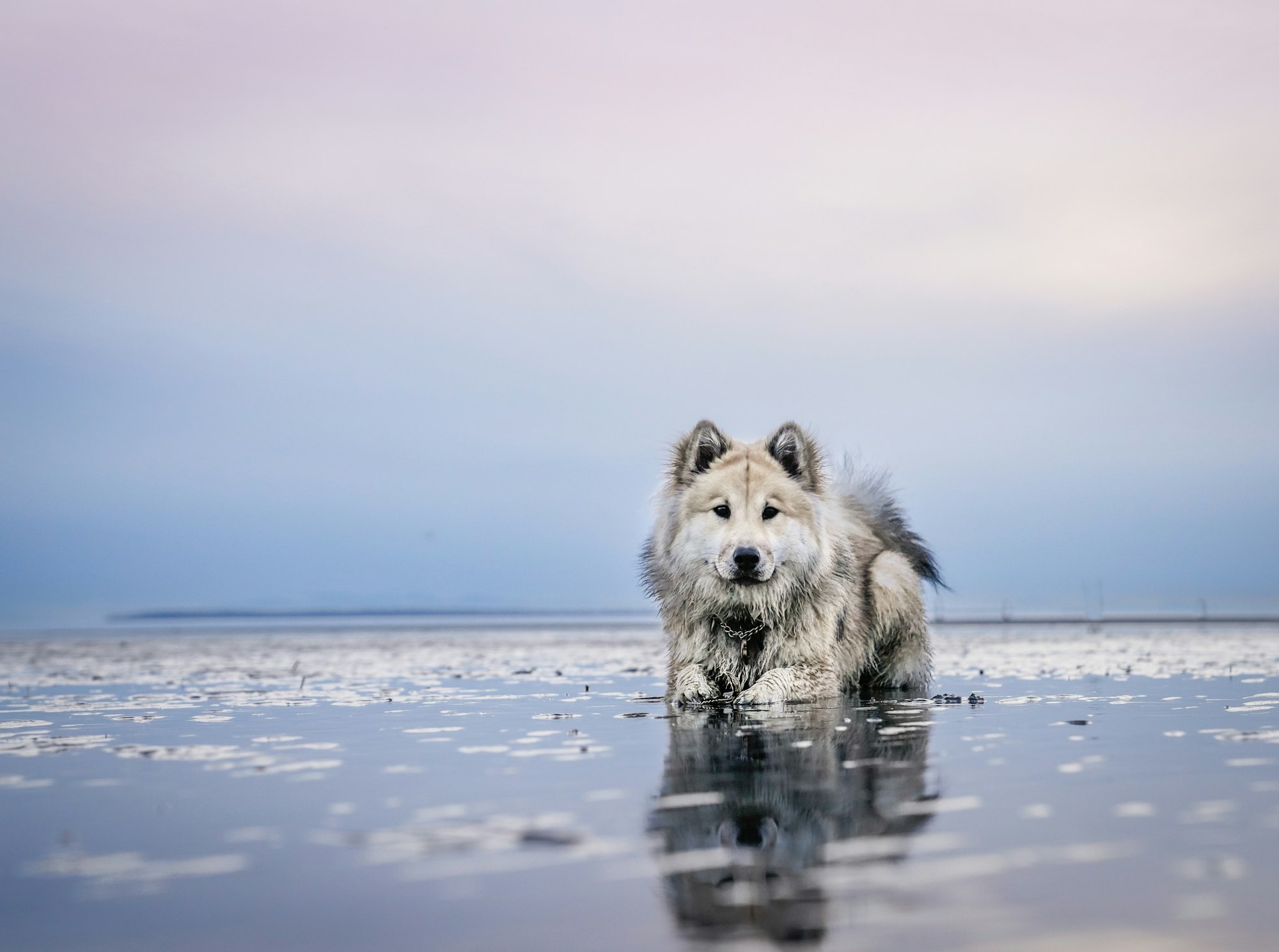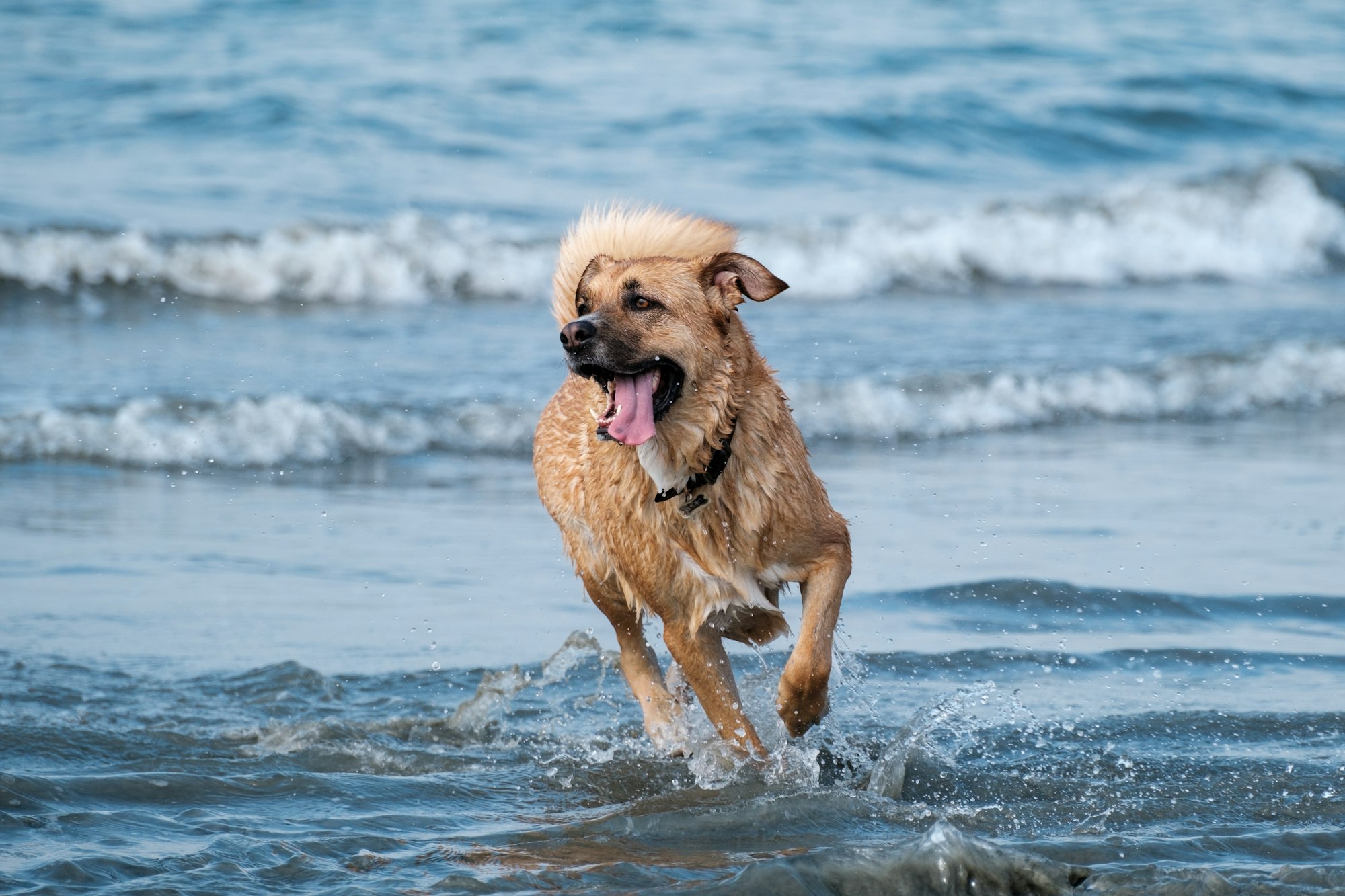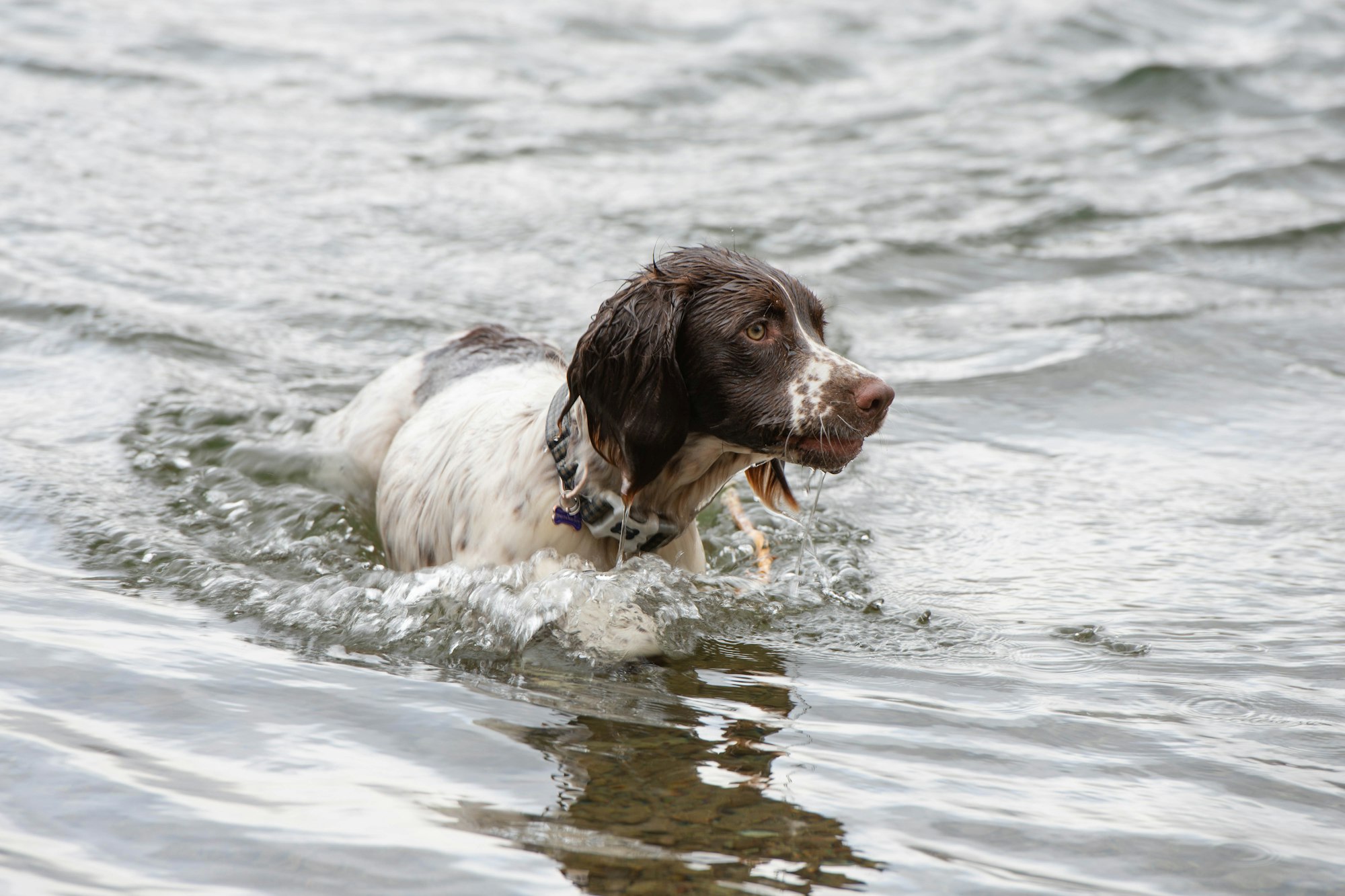When it comes to dogs, their love for water is as diverse as their breeds. Some dogs instinctively gravitate towards water bodies, showcasing an undeniable affinity for swimming and splashing around. These water-loving canines have earned the endearing moniker of "water dogs." In this article, we'll dive into the fascinating world of water dogs, exploring their origins, characteristics, popular breeds, and tips for keeping them happy and healthy in aquatic environments.

Origins of Water Dogs
The fascinating history of water dogs dates back to ancient civilizations, where these canine companions played crucial roles in various cultures and societies. The connection between humans and water-loving dogs is a testament to the versatility and intelligence of these remarkable animals.
1. Ancient Partnerships: Evidence suggests that water dogs were valued by civilizations such as the ancient Egyptians, Greeks, and Romans. These dogs were often bred for tasks like retrieving game from water bodies, assisting fishermen, and guarding boats. The strong bond between humans and water dogs can be traced through ancient artifacts and writings that highlight their contributions.
2. Purposeful Breeding: Throughout history, specific breeds were selectively bred to excel in water-related activities. For instance, the Portuguese Water Dog, with its water-resistant coat and webbed feet, was an essential partner to Portuguese fishermen. Similarly, the Newfoundland Dog's large size and strong swimming abilities made it an ideal lifeguard in icy waters.
Characteristics of Water Dogs
Water dogs boast a unique set of attributes that distinguish them from other canine companions. These characteristics are a result of both natural selection and intentional breeding.
1. Physical Adaptations: One of the most striking features of water dogs is their physical adaptations to aquatic environments. Their webbed toes, which enhance their swimming ability, and water-resistant coats, which provide insulation, are evolutionary marvels that enable them to thrive in water.
2. Innate Swimming Skills: Unlike some dogs that may be hesitant around water, water dogs often display an innate love for swimming from a young age. Their bodies are built for buoyancy, and their natural paddling motion allows them to glide effortlessly through the water.
3. Intelligence and Trainability: Water dogs are renowned for their intelligence and trainability, which were essential traits for the tasks they historically performed. This makes them adaptable to various water-related activities and an absolute joy to work with in aquatic environments.
4. Energetic Disposition: Many water dog breeds possess high energy levels, making them well-suited for activities that involve water. Whether it's retrieving objects from the water or engaging in water dog sports, their enthusiasm and vigor shine through.
5. Strong Bond with Humans: Water dogs tend to form strong bonds with their human companions. This connection, forged through years of cooperation and companionship, enhances their willingness to work alongside humans in water-related endeavors.

Popular Water Dog Breeds
When it comes to canine companions who share an innate love for water, several breeds stand out for their remarkable aquatic abilities, distinctive characteristics, and undeniable charm. Let's take a closer look at some of the most popular water dog breeds that have captured the hearts of both water enthusiasts and dog lovers alike.
1. Labrador Retriever
The Labrador Retriever, often affectionately referred to as Labs, is a quintessential water dog known for its friendly disposition and exceptional swimming skills. Bred as retrievers, Labs are natural swimmers with water-resistant double coats that provide insulation, allowing them to comfortably navigate various water conditions.
2. Golden Retriever
Golden Retrievers, with their gorgeous golden coats and friendly personalities, are also celebrated water dogs. Their love for swimming and retrieving objects from the water makes them delightful companions for families who enjoy outdoor aquatic activities.
3. Portuguese Water Dog
Originating from Portugal, as the name suggests, the Portuguese Water Dog has a rich history as a working partner for fishermen. Their webbed feet, water-resistant coat, and energetic nature make them excellent swimmers and companions for water-related tasks.
4. Newfoundland Dog
The Newfoundland Dog, known for its massive size and gentle temperament, is another iconic water dog breed. Historically used as a water rescue dog, Newfoundlands possess powerful swimming abilities and a thick, water-resistant double coat that insulates them in cold water. If you want to own your water dog then learn more about Newfoundland Dog prices.
5. Chesapeake Bay Retriever
Renowned for their stamina and versatility, Chesapeake Bay Retrievers are well-suited for waterfowl hunting and water-related activities. Their dense coat provides insulation, and their determination and loyalty make them excellent partners for outdoor adventures.
6. Irish Water Spaniel
The Irish Water Spaniel is easily recognizable by its distinctive "rat tail" and curly, water-resistant coat. Known for their intelligence and enthusiasm, these spaniels are skilled swimmers and have a history of retrieving game from water bodies.
7. American Water Spaniel
A lesser-known but equally adept water dog, the American Water Spaniel, hails from the United States. Bred for hunting and retrieving in the Midwest's water-rich landscapes, this breed is known for its versatility and water-loving nature.
8. Nova Scotia Duck Tolling Retriever
The Nova Scotia Duck Tolling Retriever, often referred to as "Tollers," is a compact and energetic breed known for its playful behavior and love for water. Tollers were initially bred for luring ducks in cold water, making them exceptional water dogs.
Tips for Water Dog Owners
Owning a water-loving canine companion is an exciting adventure, but it also comes with unique responsibilities to ensure both their safety and enjoyment around water. Whether you're a seasoned water dog owner or a newcomer to the world of aquatic canines, these tips will help you provide the best experience for your furry friend.

1. Supervision Is Key: While many water dogs are skilled swimmers, it's crucial to supervise them closely whenever they're near water. Even the most proficient swimmers can encounter unexpected challenges, such as strong currents or changes in water conditions.
2. Early Exposure and Socialization: Introduce your water dog to water from a young age positively and gradually. This helps them build confidence and familiarity with aquatic environments. Socialize them with other dogs and people around water to ensure they are comfortable in different settings.
3. Invest in a Life Jacket: Regardless of their swimming abilities, it's wise to have a well-fitting canine life jacket for your water dog. This provides an extra layer of safety and buoyancy, particularly in unfamiliar or potentially hazardous waters.
4. Training and Recall: Teach your water dog basic obedience commands like "come" and "stay." These commands are invaluable near water, as they can help you call your dog back to safety if they stray too far or encounter any risks.
5. Protect Their Ears: Water dogs, especially those with floppy ears, are prone to ear infections if water remains trapped in their ears after swimming. Make sure to dry their ears thoroughly after water activities to prevent infections.
6. Stay Hydrated: Spending time in the water can be exhilarating, but it's important to provide your water dog with plenty of fresh water to drink. The combination of exercise and water play can lead to dehydration, so keep a water source available.
7. Limit Exposure to Chlorine and Saltwater: After swimming in chlorinated or saltwater pools, rinse your water dog with clean water to remove any chemicals or salt residue. This prevents skin and coat irritation.
8. Check for Hazards: Before allowing your water dog to swim in natural bodies of water, inspect the area for potential hazards such as sharp rocks, debris, or strong currents. Ensuring a safe environment is crucial for their well-being.
9. Provide Rest and Shade: After a vigorous swim, make sure your water dog has a comfortable place to rest and cool down. Overexertion, especially in hot weather, can lead to exhaustion and heat-related issues.
10. Regular Vet Check-ups: How often vet check-ups to monitor your water dog's overall health is crucial. Discuss any concerns you have about their water-related activities, and ensure they're up to date on vaccinations.
Interesting Facts About Water Dogs
Water dogs, with their unique characteristics and affinity for aquatic environments, have captured the fascination of happy dog enthusiasts around the world. Beyond their swimming abilities, these canine companions have a wealth of intriguing qualities that make them stand out in the canine kingdom. Here are some captivating facts about water dogs that highlight their remarkable nature.
1. Ancient Roots: The history of water dogs stretches back thousands of years. Ancient civilizations recognized the value of dogs with water skills, as they played roles in fishing, retrieving, and guarding boats. These historical connections showcase the enduring partnership between humans and water-loving canines.
2. Webbed Paws and Swimming Efficiency: One of the most remarkable adaptations of water dogs is their webbed paws. This unique feature enhances their swimming efficiency by providing greater surface area for propulsion. Webbed feet are a clear indicator of their aquatic prowess.
3. Varied Coat Types: Water dogs boast an array of coat types that suit their aquatic lifestyles. From water-resistant double coats that keep them warm to curly coats that repel water, each dog coat color type serves a specific purpose in water-related activities.
4. Lifesaving Abilities: Certain water dog breeds, such as Newfoundlands, have historically been trained as water rescue dogs. Their strength, swimming ability, and innate protective instincts make them reliable companions in emergencies involving water.
5. Therapeutic Connections: Water dogs also make excellent therapy animals, especially in aquatic therapy settings. Their gentle demeanor and natural swimming ability provide comfort and support to individuals undergoing physical therapy or rehabilitation.
6. Water Dog Sporting Competitions: Water-loving breeds often participate in specialized water sports competitions. Activities like dock diving, where dogs leap off docks into the water, showcase their athletic prowess and passion for splashing around.
7. Working Relationships: Many water dog breeds have retained their strong work ethic and desire to please humans. These traits stem from their historical roles as companions to fishermen and hunters, where cooperation and partnership were crucial.
8. Distinctive Coat Colors: Water dogs exhibit a range of coat colors, often tailored to their specific environments. From the Labrador Retriever's classic yellow to the Portuguese Water Dog's black and white coat, these variations highlight the diversity within the water dog category.
9. Low-Impact Exercise: For dogs with joint issues or those recovering from injuries, water-based exercise can be highly beneficial. The buoyancy of water reduces the impact on joints, making it an ideal form of low-impact exercise for water dogs.
10. Natural Swimmers from Birth: Water dogs often display their love for swimming from a very young age. Puppies of water-loving breeds may instinctively paddle and play in the water as early as a few weeks old, showcasing their inherent connection to aquatic activities.
Conclusion
Water dogs bring an exciting dimension to the world of canine companionship. Their natural love for water, combined with their unique physical traits, makes them delightful companions for individuals and families who enjoy spending time by the water. Whether it's retrieving a ball from a lake or simply splashing around, water dogs embody the joy of embracing nature alongside our loyal four-legged friends.
FAQs
Q1: Are all water dogs large breeds?
- Not necessarily. While some water dog breeds are larger, like the Labrador Retriever, there are also smaller water-loving breeds, such as the Nova Scotia Duck Tolling Retriever.
Q2: Can I teach my non-water dog to swim?
- Yes, many dogs can learn to swim with proper training and patience. Start in shallow, calm waters and use positive reinforcement to encourage them.
Q3: Do water dogs require special grooming after swimming?
- Water dogs with water-resistant coats may need less grooming after swimming. However, it's still significant to rinse off any chlorine or salt water and dry their ears to prevent infections.
Q4: Can water dogs participate in water sports competitions?
- Absolutely! Many water dog breeds excel in activities like dock diving, water retrieving trials, and agility courses designed for water-loving dogs.
Q5: What precautions should I take when boating with my water dog?
- Always ensure your water dog wears a life jacket when on a boat. Additionally, introduce them to the boat gradually and provide a comfortable and safe place for them to rest.